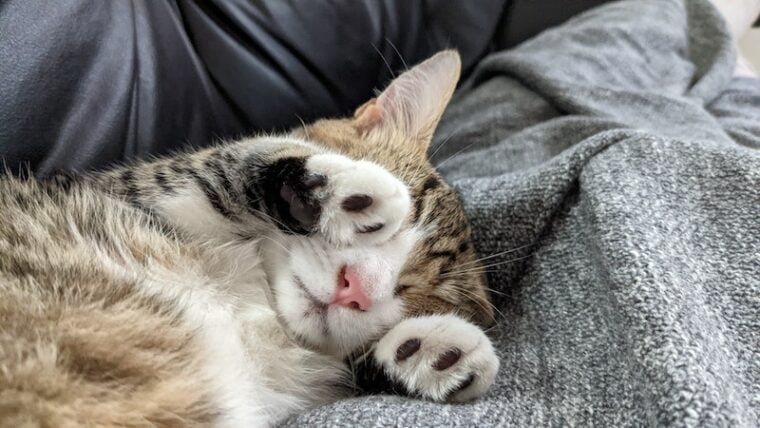
Our feline friends’ paws are different from our feet in a few important ways:
In this article, we will discuss some of the common problems that affect cats’ paws, how they are treated, and what you can do to help keep your kitty’s paws healthy.
The 5 Common Cat Paw Problems
1. Excessively Long or Ingrown Claws
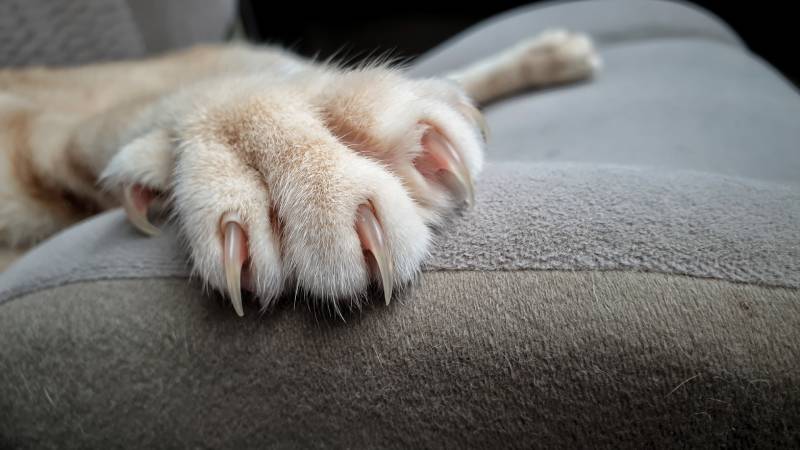
Let’s start with some interesting facts about cats’ claws:
Claws that are too long may get stuck in soft materials (e.g., carpet), which can lead to an injured toe(s). If they become ingrown, this is painful and may cause infection.
What To Do
If you notice that your cats’ claws have become too long, you can simply trim them at home. If you do not feel comfortable doing this yourself, a local groomer or veterinary clinic will be able to help.
If you suspect that one or more of your cat’s claws have grown into their foot pad(s), please seek veterinary attention right away. Your kitty may benefit from some sedation so that they can be comfortable while the veterinarian trims the affected nail and removes the ingrown portion. The area will be cleaned thoroughly, antibiotics may be given, and your cat will most likely receive pain medication.
Keeping your cat's nails trimmed can help you avoid many common paw problems. We like Hepper's Cat Nail Clipper Set because it has it all: two sizes of well-designed clippers, a nail file, and a handy carrying pouch. The clippers have built-in safety guards and locking switches, and the blades are made of sturdy, easy-to-clean stainless steel.
At Pet Keen, we've admired Hepper for many years, and decided to take a controlling ownership interest so that we could benefit from the outstanding designs of this cool cat company!
2. Musculoskeletal Injuries
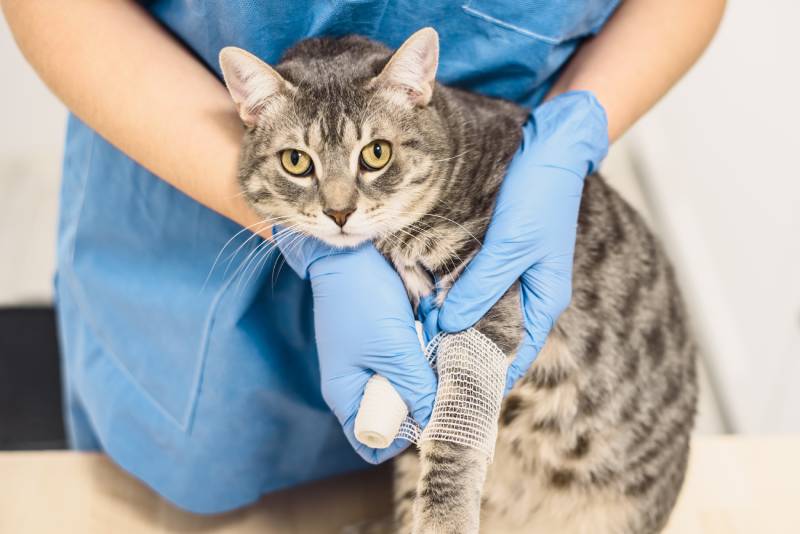
Musculoskeletal injuries are anything affecting the muscles, tendons/ligaments, or bones. These are often the result of an accident, such as:
Musculoskeletal injuries are usually fairly obvious because cats often favor the affected paw (e.g., licking, holding it up, limping). The paw may also be swollen.
What To Do
If you suspect that your cat may have injured their paw, it is a good idea to have them checked out by a veterinarian. Radiographs (x-rays) may be recommended to rule out broken bones. In some cases, a bandage, cast, or surgery may be necessary. The veterinarian will likely prescribe some pain medication, and you will need to limit your kitty’s activity until their paw is healed.
3. Wounds
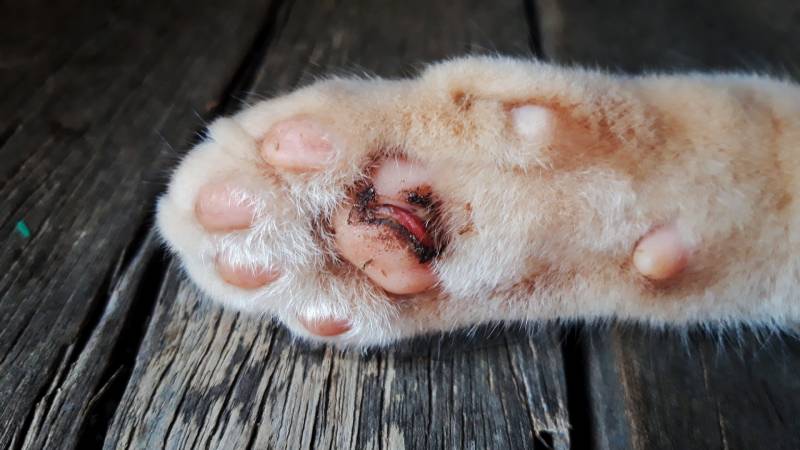
Outdoor cats typically have a higher chance of getting lacerations (cuts) and puncture wounds. Examples include:
Any wound can become infected, but bite wounds are especially prone to infection due to the bacteria found in most animals’ mouths.
What To Do
If you notice a wound or puncture on your cat’s paw, it is best to seek veterinary attention.
4. Insect Bites/Stings
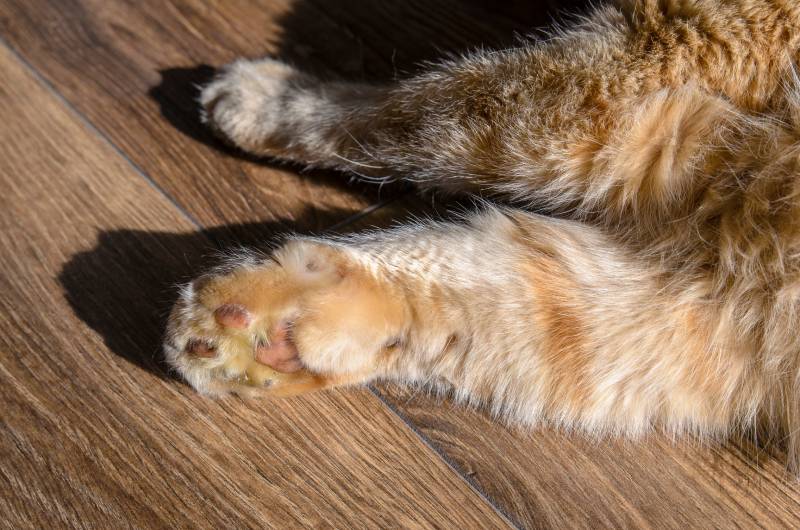
It is not uncommon for curious cats to chase insects, disturb hives, and accidentally step on nests. Outdoor cats may be more likely to be bitten or stung, but insects can also make their way indoors. Common culprits include bees, wasps, hornets, biting ants, and spiders. A clue that your cat may have been stung is sudden scratching or chewing at a specific part of their body.
Cats can also experience anaphylactic reactions. These are an emergency! Signs of anaphylaxis often appear within 20 minutes of the bite/sting, but you should monitor your cat closely for a few hours to be safe.
What To Do
If you suspect your cat has been bitten or stung, contact a veterinarian for advice. If there is no evidence of a serious reaction (anaphylaxis), they may recommend giving an anti-inflammatory or antihistamine medication.
Monitor the site for signs of infection such as:
5. Abrasions (Scrapes) and Burns
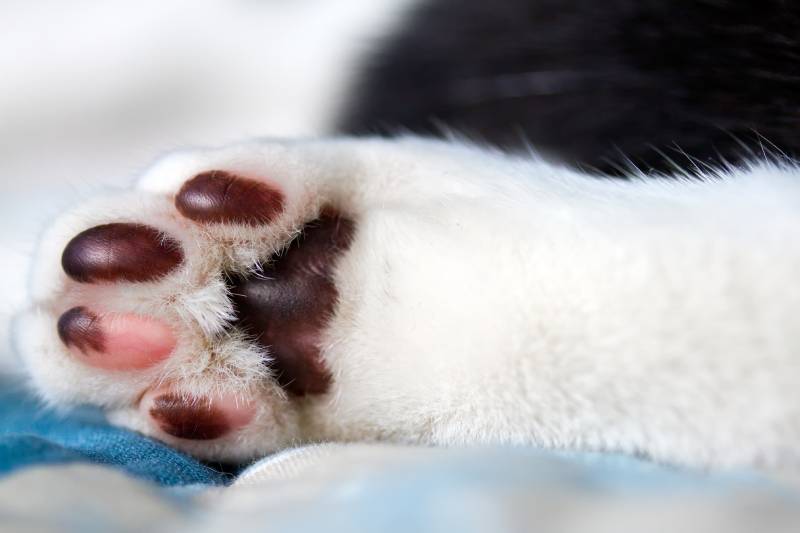
Cats can scrape or burn their paws in a variety of ways. They may jump onto something hot (e.g., pavement, stove) or walk on an area that has been cleaned with a corrosive product (e.g., bleach, rust remover).
What To Do
Seek veterinary attention if you notice redness, raw-looking skin, or blisters on your cat’s feet. They may require a bandage, a topical ointment, or antibiotics. They will likely also benefit from some pain medication (kitty paws are sensitive!).
Special note: topical antibiotic ointments like Polysporin and Neosporin should NOT be used in cats because they can have serious anaphylactic reactions, which are sometimes fatal.
Conclusion
Given cats’ curious nature, accidents are bound to happen. However, there are some things you can do to help keep your kitty’s paws in tip-top shape:
If you have any concerns about your cat’s paws, please consult a veterinarian.
See also:
- How Often Should You Trim Your Cat’s Nails?
- Does a Cat Need Their Paw Fur Trimmed? Vet Approved Tips
Featured Image Credit: Julie G, Unsplash








